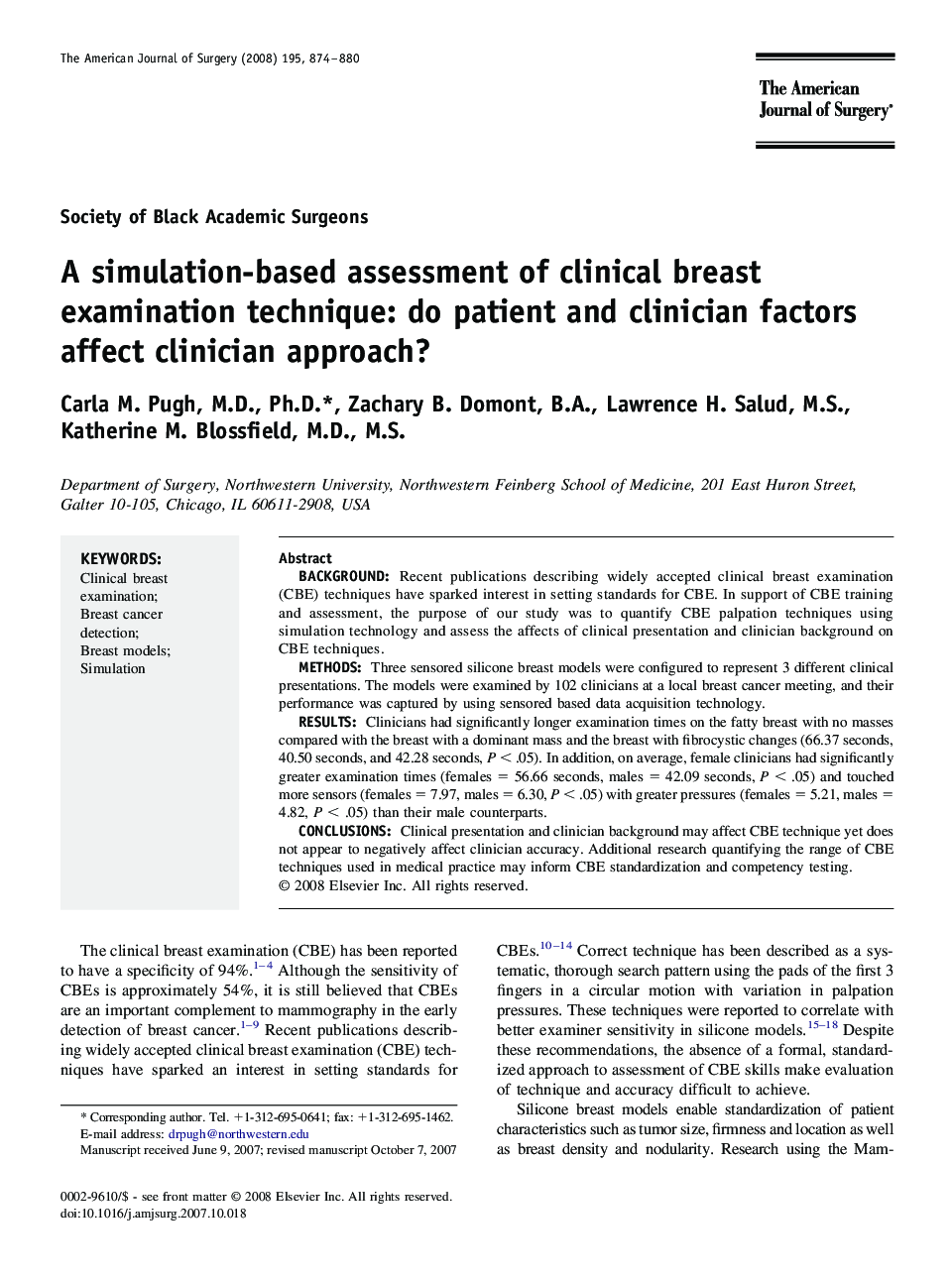| Article ID | Journal | Published Year | Pages | File Type |
|---|---|---|---|---|
| 4281052 | The American Journal of Surgery | 2008 | 7 Pages |
BackgroundRecent publications describing widely accepted clinical breast examination (CBE) techniques have sparked interest in setting standards for CBE. In support of CBE training and assessment, the purpose of our study was to quantify CBE palpation techniques using simulation technology and assess the affects of clinical presentation and clinician background on CBE techniques.MethodsThree sensored silicone breast models were configured to represent 3 different clinical presentations. The models were examined by 102 clinicians at a local breast cancer meeting, and their performance was captured by using sensored based data acquisition technology.ResultsClinicians had significantly longer examination times on the fatty breast with no masses compared with the breast with a dominant mass and the breast with fibrocystic changes (66.37 seconds, 40.50 seconds, and 42.28 seconds, P < .05). In addition, on average, female clinicians had significantly greater examination times (females = 56.66 seconds, males = 42.09 seconds, P < .05) and touched more sensors (females = 7.97, males = 6.30, P < .05) with greater pressures (females = 5.21, males = 4.82, P < .05) than their male counterparts.ConclusionsClinical presentation and clinician background may affect CBE technique yet does not appear to negatively affect clinician accuracy. Additional research quantifying the range of CBE techniques used in medical practice may inform CBE standardization and competency testing.
